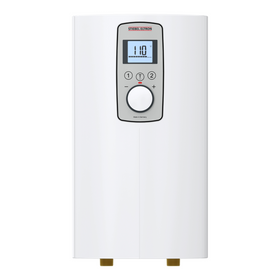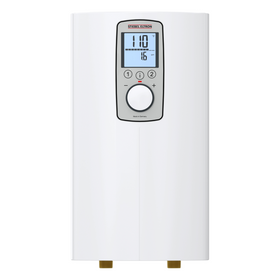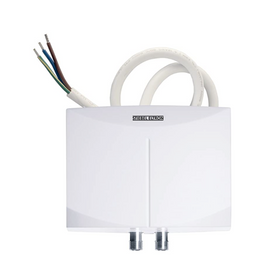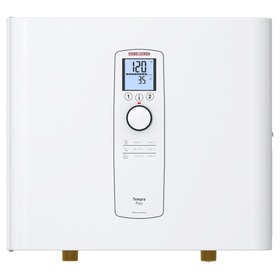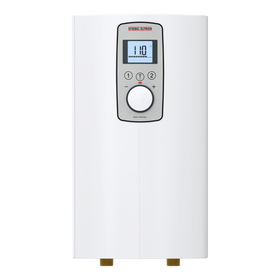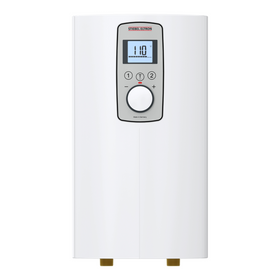
How to Make Use of Rainwater at Home with a Cistern
Last Updated: Feb 26, 2025In May of 2018, the California Energy Commission approved a bold plan that requires all new home and apartment construction to include a residential solar panel system. This law took effect on January 1, 2020. As we look toward a more sustainable future, specific legislation such as this California law will play a significant role. They will help reduce our collective carbon footprint while simultaneously increasing our homes and communities' resiliency. Similarly, household rainwater catchment systems might soon become another mandated, sustainable aspect of household construction. Homeowners looking for a way to increase their resiliency would do well to consider incorporating a home cistern for autonomous water supply.
Table of Contents
- The Impending Water Scarcity Crises
- What is a Rainwater Cistern?
- How Do I Size a Rainwater Cistern?
- What Are The Essential Elements of a Cistern?
- Does a Cistern Require Gutter Guards?
- Does a Cistern Need A First Flush Diverter?
- Does a Cistern Require A Filtration System
- Where Can You Find Supplies for Your Home Cistern?
- How Much Does a Cistern Cost?

The Impending Water Scarcity Crises
According to the US Government Accountability Office (GAO), 80 percent of states across the country have at least one region expected to face a severe water scarcity crisis within the coming decade. When most people think of water shortages, the first thing that comes to mind is Arizona's deserts or the water-scarce cities of California. These California regions are suffering from a loss of snowpack in the Sierra Mountains, which is the primary source of fresh water for large areas of the state. The GAO report mentions that economic growth patterns and a change in land use could further complicate the planning efforts to deliver potable, fresh water to millions of households.
Along similar lines, the rising temperatures associated with global climate change could also negatively impact plans to deliver freshwater to households in some regions. One such example is Salt Lake City, Utah. One recent study determined that the city should expect a 3.8 percent annual decrease in the flow rate of local rivers and streams for every degree Fahrenheit of global warming.
At the same time, a decrease in the availability of local freshwater sources also implies a higher energetic cost to pump water from farther away. Streams that dry up mean that local water utility companies will need to search for water sources further away. For example, the Ogallala Aquifer, which sits underneath a large portion of the Midwestern part of the United States, has been dropping twice as fast during the past six years as it did in the past six decades. This water level drop is increasing the energy cost of pumping it out.
We use 520 billion kilowatt‐hours (kWh) of energy to move, treat, and heat the water we use as a nation. This amounts to 13 percent of the US's entire electricity use and is responsible for 290 million metric tons of carbon dioxide emissions each year. It is, therefore, essential to find ways to reduce our dependence on municipal water sources that are often pumped into our homes at a high energetic cost will reduce our household carbon footprint while increasing our home's resiliency. A rainwater catchment system and a home cistern are practical ways to achieve these goals.

What is a Rainwater Cistern?
The home rainwater cistern is the backbone of any rainwater harvesting system. In essence, these systems rely on a catchment area that is usually a sloped roof, a conveyance network of gutters and downspouts, a storage tank, and a distribution system. The simplest of rainwater harvesting systems is simply a 55-gallon barrel placed next to your home where your gutters drain. The water collected in these barrels can subsequently be used for lawn irrigation, washing cars, or other outdoor activities.
More sophisticated rainwater harvesting systems, however, rely on a larger cistern. Large amounts of water can be harvested, stored, filtered, and connected to your household plumbing system for use as a safe, reliable, and potable water source in these systems.
How Do I Size a Rainwater Cistern?
Many skeptical homeowners living in areas with limited amounts of rainfall might doubt a cistern's ability to store sufficient water for an entire household. A few simple calculations will allow you to determine the amount of rainwater that your home can capture. These calculations will help define the optimum cistern size to supply your home with an autonomous supply of potable water.
For example, let's consider an average-size home in the United States. The average annual rainfall is just about 30 inches per year. The USGS estimates that the average person uses between 80 to 100 gallons of water per day. Of course, homeowners could radically reduce the amount of water they use by switching to dual flush toilets, low-flow showerheads, and other water-saving devices. So, for a family of four, the high estimate would amount to an annual household water usage of 146,000 gallons.
Several complex mathematical formulas can determine the amount of rainwater you can capture, but let's simplify. A straightforward calculation is that for every inch of rain that falls on 1,000 square feet of roof, a household can capture 620 gallons of water. Let's take an example case in which our theoretical family has a 2,500 square foot roof and a 500 square foot detached garage. So, they could capture 1,860 gallons of water for every inch of rainfall, or 55,800 gallons of rainwater each year. You can also use this simple rainwater harvesting calculator to determine the amount of water your roof can capture.

Your household cistern's optimum size will depend on climate patterns and the length of the expected period of droughts. A home that chooses composting toilets, low flow plumbing fixtures, and water-smart home landscapes could easily capture and store all of the water they need for their annual household water requirements.
What Are The Essential Elements of a Cistern?
The home cistern is the backbone of any rainwater catchment system. It can be made from different materials, including cinderblock, reinforced concrete, or precast concrete, fiberglass, or steel. Cisterns are often located underground (even underneath the home). Then, the water is pumped back into the house through a pressurized plumbing system. For potable water inside the home, your cistern and rainwater catchment system should also include the following elements.
Does a Cistern Require Gutter Guards?
The first line of defense against debris making its way into your cistern is a system of gutter guards to keep your catchment system free of leaf and other larger debris.
Does a Cistern Need A First Flush Diverter?
Since roofs can often collect dust, leaves, and other debris, a first flush diverter is another essential element of your rainwater catchment system. It diverts the first water flow from the system. So, the first "gush" of water from a rainstorm will wash all the sediment from your roof and gutter system away before diverting the rest of the cleaner water back to your cistern.
Does a Cistern Require A Filtration System
Your cistern will also need to have to undergo filtration before pumping the water back into your home. This filtration will help to make sure your water source is clean and potable. It will also keep your plumbing clear of clogs caused by the debris. Several types of filter systems for home cisterns include activated carbon filters, floating filters, and UV filters.
How Much Does a Cistern Cost?
Rain Harvesting Supplies is a Texas-based company that also offers complete home cistern packages. Their Raintech Above Ground Cistern Package provides 2,500 gallons of storage for under $2,000 and includes filters, pumps, and connections.
A home cistern will require a significant investment. However, you will also notice immediate savings in a reduced (or even eliminated) water bill. Assuming that you have an average water bill of $50 per month, you could receive up to $600 of savings each year, which would lead to relatively quick payback time.
Tobias Roberts
Tobias runs an agroecology farm and a natural building collective in the mountains of El Salvador. He specializes in earthen construction methods and uses permaculture design methods to integrate structures into the sustainability of the landscape.




